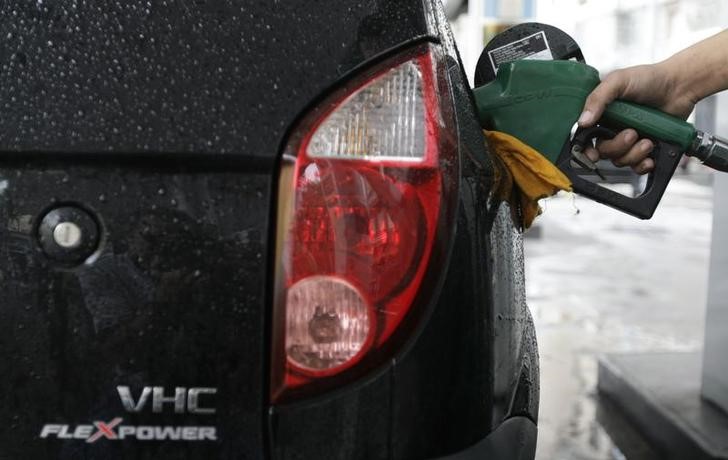By Mohi Narayan
(Reuters) -Oil prices edged higher on Wednesday after industry data showed a larger-than-expected drawdown of U.S. inventories, signalling robust demand from the world’s biggest oil consumer, but the gains were limited by worries over interest rate hikes.
futures rose 34 cents, or 0.47%, to $72.60 a barrel at 0626 GMT, while U.S. West Texas Intermediate (WTI) futures gained 26 cents, or 0.38%, to $67.96 a barrel.
Both contracts had fallen by about 2.5% in the previous session on signals that central banks may not be done with interest rate hikes.
“Tuesday’s slump took Brent and WTI close to support levels that have held through the price dives of the past couple of months,” said Vandana Hari, founder of oil market analysis provider Vanda (NASDAQ:) Insights. “The floor is being tested again – whether it holds, remains to be seen.”
Brent’s six-month spread – a price structure in which sooner-loading contracts trade above later-loading ones – was at its lowest in six months.
But the two-month spread was in the opposite price position, called contango.
“A widening contango at the prompt end and a weakening backwardation along the Brent and WTI forward curves signals growing market perception of oversupply,” Hari said.
Crude stocks fell by about 2.4 million barrels in the week ended June 23, according to the market sources, citing data from industry group American Petroleum Institute. Analysts had expected a draw of 1.76 million barrels. U.S. government data on stockpiles is due on Wednesday. [EIA/S]
Gasoline inventories fell by about 2.9 million barrels, compared with estimates for a draw of 126,000.
On the demand side, European Central Bank President Christine Lagarde said on Tuesday that stubbornly high inflation will require the bank to avoid declaring an end to rate hikes. Higher interest rates can weigh on economic activity and oil demand.
A rise in U.S. consumer confidence in June also led to market concerns that the Federal Reserve would likely have to continue raising interest rates.
Analysts said that markets have struggled to shake off fears that higher interest rates will weigh on global growth and oil demand.
“However, we continue to expect the market to tighten in second-half 2023 on the back of Saudi supply cuts effective from July with upside risk to prices from current levels,” analysts at National Australia Bank (OTC:) commodity research said in a note.
Separately, Russia’s energy ministry said it sees no shortage of gasoline in the domestic market, with companies having cut exports and increased production after gradually completing planned maintenance work.
Diesel fuel production at the end of June was 2% higher than in the same period last year, and stocks are at a historical high, the energy ministry added.
In China, annual profits at industrial firms extended a double-digit decline in the first five months as softening demand squeezed margins, reinforcing hopes of more policy support to bolster a stuttering post-COVID economic recovery.
Read the full article here










